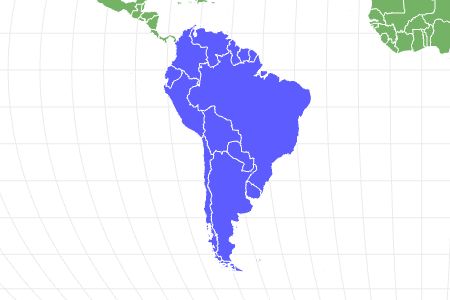Lipstick Albino Boa
Boa constrictor
Lipstick albino boas are a designer morph that you'll only find from breeders.
Advertisement
Lipstick Albino Boa Scientific Classification
- Kingdom
- Animalia
- Phylum
- Chordata
- Class
- Reptilia
- Order
- Squamata
- Family
- Boidae
- Genus
- Boa
- Scientific Name
- Boa constrictor
Read our Complete Guide to Classification of Animals.
Lipstick Albino Boa Conservation Status
Lipstick Albino Boa Facts
- Prey
- Rats, mice, rodents, other mammals
- Name Of Young
- Neonate, baby, snakelet
- Group Behavior
- Solitary except during mating season
- Fun Fact
- Lipstick albino boas are a designer morph that you'll only find from breeders.
- Most Distinctive Feature
- Bright oranges and reds.
- Other Name(s)
- Kahl albino boa
- Gestation Period
- 100-120 days
- Lifestyle
- Nocturnal
- Diurnal
- Favorite Food
- Small mammals
- Location
- South America
View all of the Lipstick Albino Boa images!
Also called Kahl albino boas, the lipstick albino was the first successful T- albino line, founded in 1992.
Boa constrictors, snakes that often reach 10 feet long, aren’t as popular as pets as smaller species like ball pythons. However, this boa lineage is probably the most well-known of all albino boa constrictors. Albino boas were some of the first color morphs available to pet boa constrictor keepers in the early 1990s. Now, with more than 30 different genetic traits to combine, breeders create dozens of different color and pattern combinations.
Incredible Lipstick Albino Facts
- Lipstick albino boas are albino boas from the Kahl line of albino boas, which Peter Kahl produced from breeding in 1993.
- Albinism sometimes happens in the wild, but most albino animals don’t survive.
- Captive-bred snakes are bred for various traits, including color, pattern, and size.
Where to Find Lipstick Albino Boas
In the wild, boa constrictors (Boa constrictor constrictor) live throughout most of South America, in countries such as Brazil, Venezuela, Paraguay, and Uruguay. However, lipstick albino boas are only available from breeders. They’re popular snakes because of their beauty and docile temperament.
Lipstick Albino Boa Scientific Name and Classification
Boa constrictors are one of the few animals where the common name is the same as their scientific name. The genus of Boa is Latin and means large water snake.
Lipstick albino boas result from a recessive gene trait both parents pass on to their offspring, like in other animals. These boas are from the Boa imperator species or BCI, but they and those from the Boa constrictor are closely related and collectively called boa constrictors. However, breeders often differentiate between BCC and BCI, so buyers know what they’re getting.
Identifying Lipstick Albino Boas: Appearance
Wild boa constrictors vary according to where they live, but most have a cream, brown, or gray base color with reddish-brown to brown saddle markings that usually become redder toward the tail. They have distinctive dark stripes on each side of their triangular heads and one stripe extending from the snout to the back of their heads.
Captive-bred lipstick albino boas have the same pattern but don’t have any dark colors. T-negative albinism eliminates all of the dark colors, leaving behind reds and orange. These snakes have vivid reds and oranges, and they don’t yellow much as they age — you’ll have a brightly-colored snake for the next 20 or 30 years!
They’re powerful nonvenomous constrictors with muscular bodies. Female boa constrictors can grow up to 14 feet long, and males generally don’t exceed eight. In captivity, females often reach close to the 14-foot mark because they don’t have any predators or other threats to avoid.
Lipstick Albino Pictures and Videos
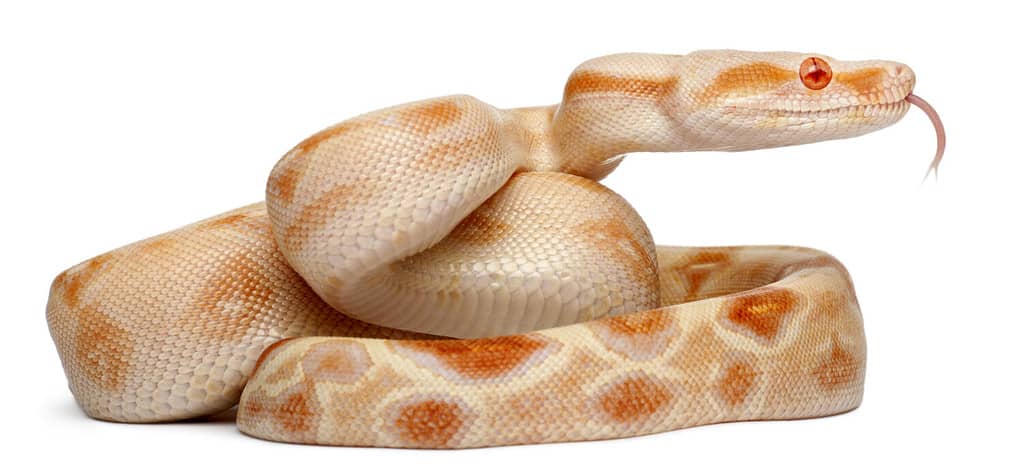
Albino boas lack the ability to produce any dark pigments.
©Eric Isselee/Shutterstock.com
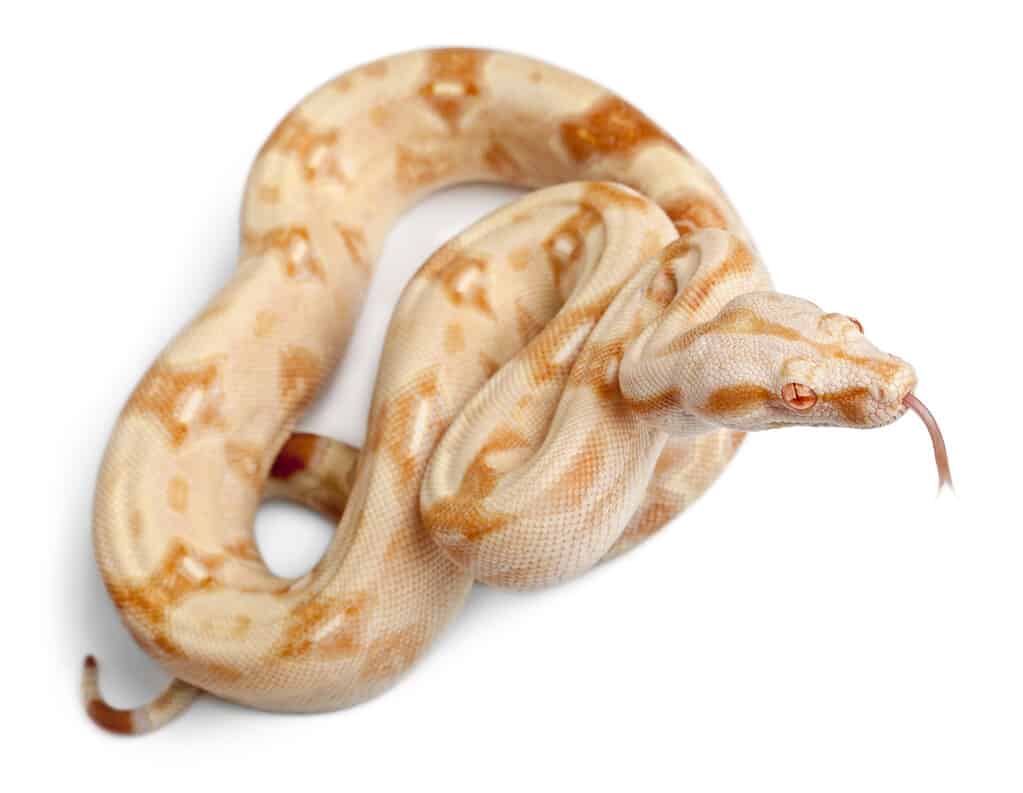
T-negative boas have no dark pigments and instead display vivid oranges and reds.
©GlobalP/iStock via Getty Images
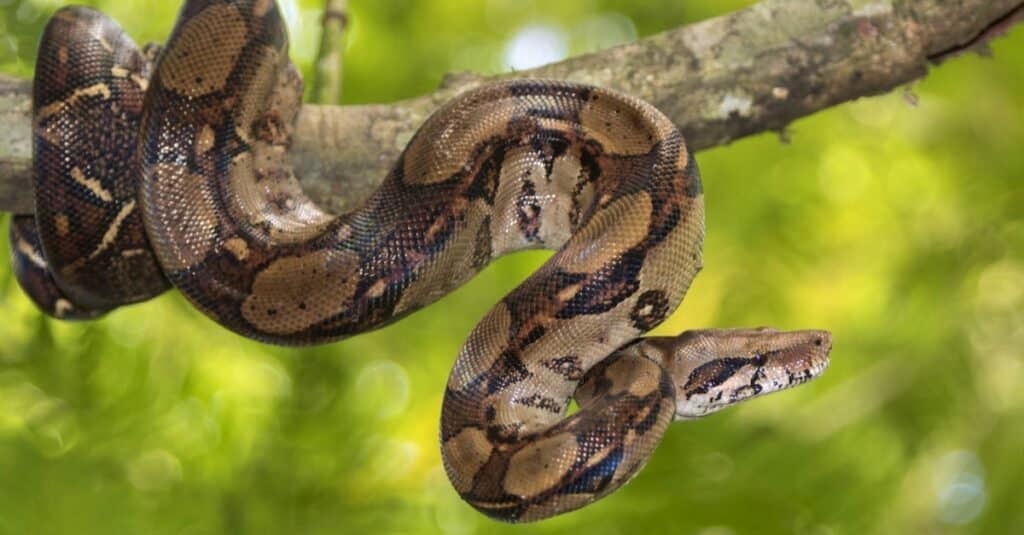
Even though albino boas don’t have any dark pigment, their pattern is still similar to that of a normal boa constrictor.
©Natalia Kuzmina/Shutterstock.com
Evolution and History of Lipstick Albino Boas
Boas are primitive snakes with vestigial legs, called spurs, near their cloaca at the base of the tail. These snakes are nocturnal and have vertical pupils, but they are more likely to use their heat-sensing pits that line their lips and tongues to locate prey at night.
These nonvenomous snakes don’t have fangs or venom, but they have lots of razor-sharp teeth that they use to hold their prey. Meanwhile, they use their strong, muscular bodies to subdue the animal before swallowing it whole.
There are two main albino boa lineages that are incompatible with one another.
- Kahl line
- Sharp line
Also called Kahl albinos, lipstick albino boas trace back to a few snakes Peter Kahl imported in the 1980s and successfully bred in 1992. These albino boas are tyrosinase negative, which means they either lack the ability to produce the enzyme or have defective tyrosinase. Lipstick albino boas still have a normal boa pattern but without any dark pigments; it’s all pink and orange shades with a pale white or cream background.
Pet boas are most likely to be BCI because more are on the market. In addition, nearly all the color and pattern morphs are BCI boas, even if they have BCC in their background.
Lipstick Albino Boas Behavior
Most often, they’re ambush predators, and wild boas use the environment to their advantage. A boa’s pattern uses disruptive camouflage, where the pattern obscures the edges of the animal’s body. You could look right at a wild boa in its natural habitat and not see it.
Like their wild counterparts, lipstick albino boas are semiarboreal until they get bigger and heavier. These snakes are active and interesting pets that are typically nocturnal but are often active during the day too. Lipstick albino boas are all captive-bred and generally easy-going animals. Boas like to explore, and unlike some snakes, they’re more interactive when handling them.
Lipstick Albino Boa Habitat and Diet
Wild boa constrictors live primarily in jungles and rainforests. They thrive in warm, humid climates and also in semidesert regions — but they prefer rainforests for the natural cover from predators and tons of prey options. These snakes usually aren’t far from a water source and are excellent swimmers. They’ll even take over animal burrows for shelter from predators.
Lipstick albino boas are large snakes that need enclosures big enough to provide climbing, hiding, and exploring opportunities. They’re inquisitive, intelligent snakes; they are happiest when they get interaction with their people and have the chance to explore new places.
As obligate carnivores, boas eat nothing but meat. These snakes enjoy prey ranging from mice all the way up to rabbits as adults. Captive-bred boas typically take pre-killed prey without issue.
Lipstick Albino Boa Predators, Threats, Conservation, and Population
Wild boa constrictors are listed as “least concern” on the IUCN Redlist of Threatened Species. However, although they are harvested for meat and leather in some areas, their population seems stable overall. In the wild, boa constrictors are both predators and prey. Larger carnivores like jaguars sometimes take them, and younger boas fall victim to anything bigger.
While albino animals do sometimes occur in nature, you’re more likely to see lipstick albino boas offered in the pet trade. These snakes have little to fear!
Lipstick Albino Boa Reproduction, Babies, and Lifespan
These gorgeous boa constrictor morphs have all the benefits of their wild counterparts without the danger inherent to living in the wild. Lipstick albino boa constrictors usually mature by the time they’re about five years old. This species lives easily into its 20s, and some snakes live 30 years.
Several months after they mate, females give birth to as many as 65 baby snakes that can measure up to two feet long.
Similar Animals
View all 98 animals that start with LLipstick Albino Boa FAQs (Frequently Asked Questions)
What is the lipstick gene in boas?
It’s essentially a recessive gene trait that causes T-neg albinism.
How big do albino boas get?
Most females are between 10 and 14 feet long, but males are much smaller at 5-8 feet.
Are lipstick albino boas rare?
Somewhat, but you’re more likely to see it in combination with other traits to accentuate traits that the breeder likes.
Are lipstick albinos boas aggressive?
Not really, if they’re handled and socialized properly as young snakes, they’re generally pretty great as adults.
What do lipstick albino boas eat?
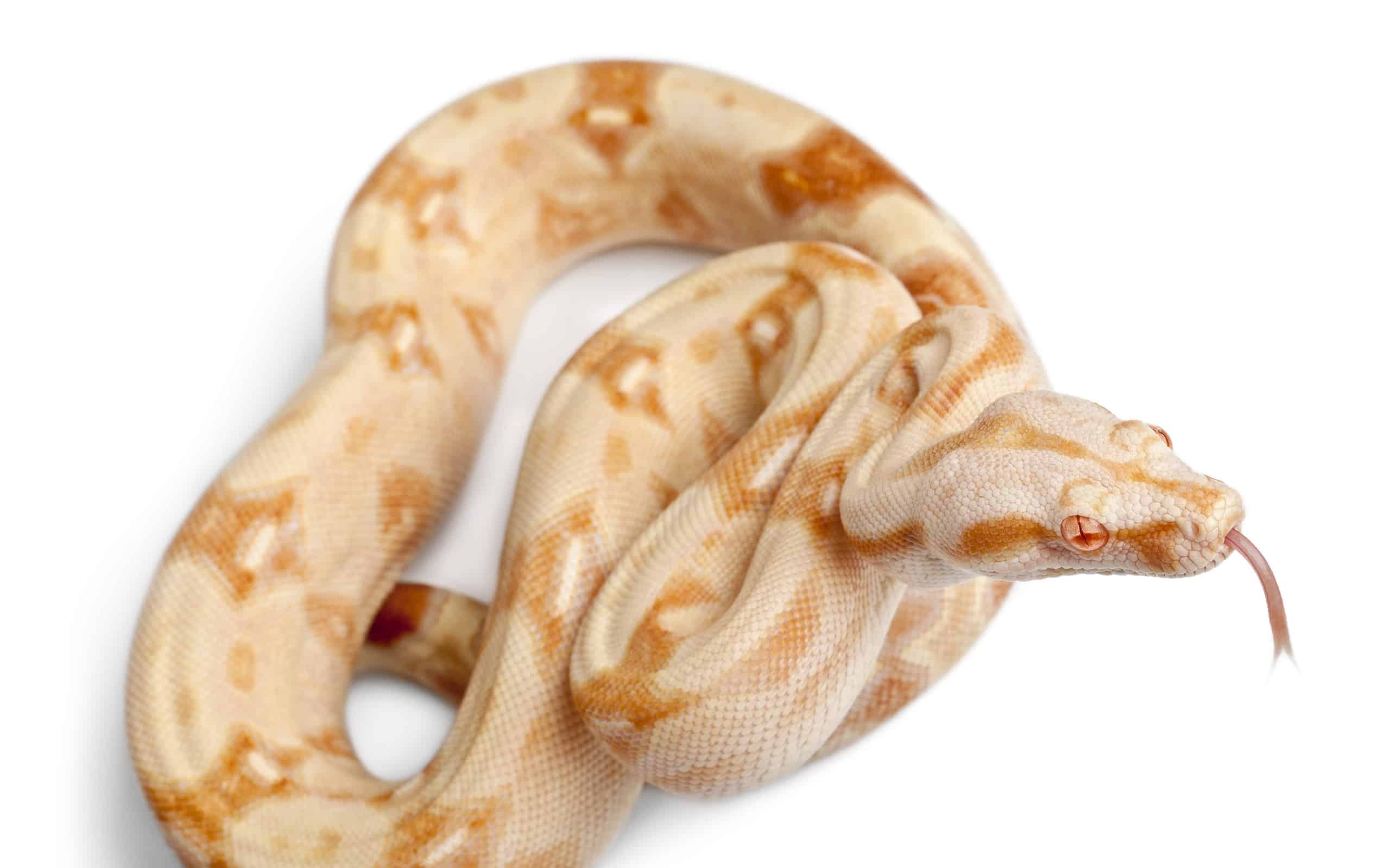
Albinos Boa constrictor, Boa constrictor, 2 months old, in front of white background
Like other boas, lipstick albino boas eat various mammals. They enjoy mice, rats, rabbits, and more.
Thank you for reading! Have some feedback for us? Contact the AZ Animals editorial team.
Sources
- Tyrosinase-negative oculocutaneous albinism, Available here: https://www.ncbi.nlm.nih.gov/gtr/conditions/C4551504/
- IUCN Redlist of Threatened Species, Available here: https://www.iucnredlist.org/species/197462/2486405#habitat-ecology
- Reptarium Reptile Database, Available here: https://reptile-database.reptarium.cz/species?genus=Boa&species=constrictor

